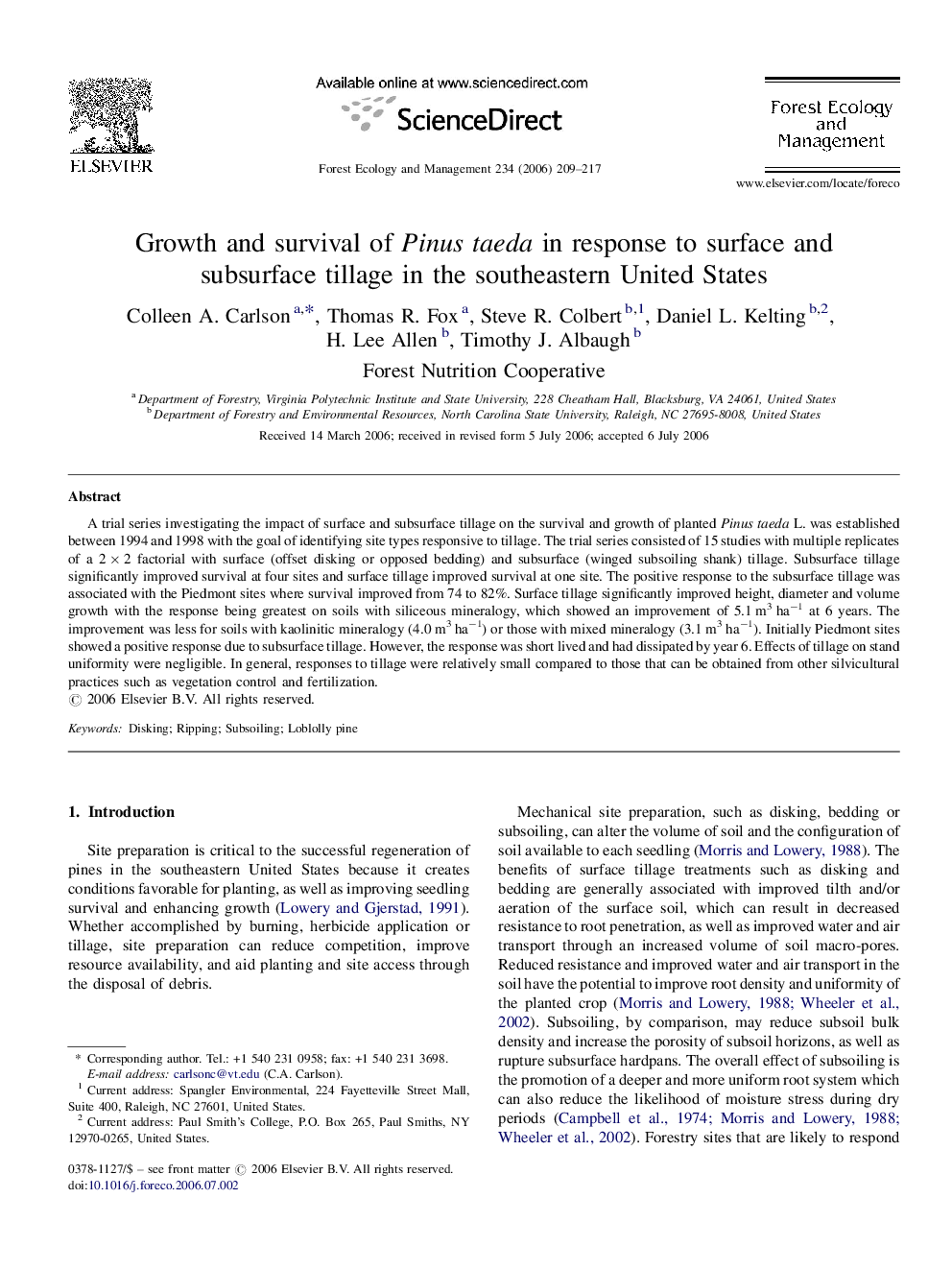| Article ID | Journal | Published Year | Pages | File Type |
|---|---|---|---|---|
| 90206 | Forest Ecology and Management | 2006 | 9 Pages |
A trial series investigating the impact of surface and subsurface tillage on the survival and growth of planted Pinus taeda L. was established between 1994 and 1998 with the goal of identifying site types responsive to tillage. The trial series consisted of 15 studies with multiple replicates of a 2 × 2 factorial with surface (offset disking or opposed bedding) and subsurface (winged subsoiling shank) tillage. Subsurface tillage significantly improved survival at four sites and surface tillage improved survival at one site. The positive response to the subsurface tillage was associated with the Piedmont sites where survival improved from 74 to 82%. Surface tillage significantly improved height, diameter and volume growth with the response being greatest on soils with siliceous mineralogy, which showed an improvement of 5.1 m3 ha−1 at 6 years. The improvement was less for soils with kaolinitic mineralogy (4.0 m3 ha−1) or those with mixed mineralogy (3.1 m3 ha−1). Initially Piedmont sites showed a positive response due to subsurface tillage. However, the response was short lived and had dissipated by year 6. Effects of tillage on stand uniformity were negligible. In general, responses to tillage were relatively small compared to those that can be obtained from other silvicultural practices such as vegetation control and fertilization.
